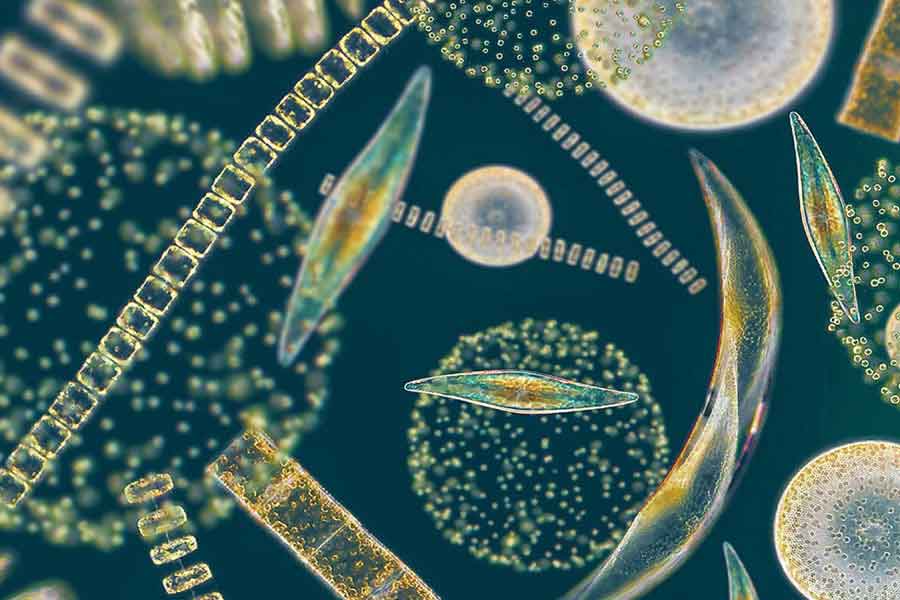
A single liter of seawater can contain hundreds of thousands of diatoms, tiny microscopic plants that collectively make up the largest plant biomass on the planet. When observed under an electron microscope, they resemble delicate transparent jewelers with intricate and astonishingly beautiful patterns (as shown in the photo magnified 200 times).
These spherical, rectangular, fusiform, or oval cases are external skeletons formed with silica that diatoms extract from seawater and secrete around themselves. The cases consist of two perfectly fitting parts, one inside the other. To prevent sinking due to the weight of the case, these tiny plants have a microscopic drop of oil that allows them to float and even adjust their buoyancy when the oil density changes based on variations in seawater temperature.
Diatoms reproduce through binary fission. The cell nucleus divides into two, with one part keeping one of the silica shells and the other part keeping the rest, and then each of these daughter cells regenerates half of the missing skeleton. If the plant dies, the silica skeleton settles on the seafloor. The accumulation of diatom skeletons over geological time has led to the formation of sedimentary rock beds, sometimes several meters thick.
Like all plants, diatoms produce more oxygen than they need during photosynthesis and supply it to marine animals. Diatoms produce a staggering 70% of the oxygen required for the Earth’s animal population. Moreover, they are the «pasture» that forms the foundation of the marine food chain. For example, a major consumer of diatoms is krill, which later becomes food for many marine animals, including whales.
That is why anything that affects the life of diatoms directly impacts life on the planet. If the ocean deteriorates and diatoms die, life on Earth would perish with them. It is incredible to think that the entire existence of our system depends on the health of an extremely tiny plant. It is very difficult to imagine that when we move underwater, we are traversing a beautiful garden of the most varied and magnificent forms that nature has designed, unable to see it.
«One cannot defend what one does not love, and one cannot love what one does not know.»

